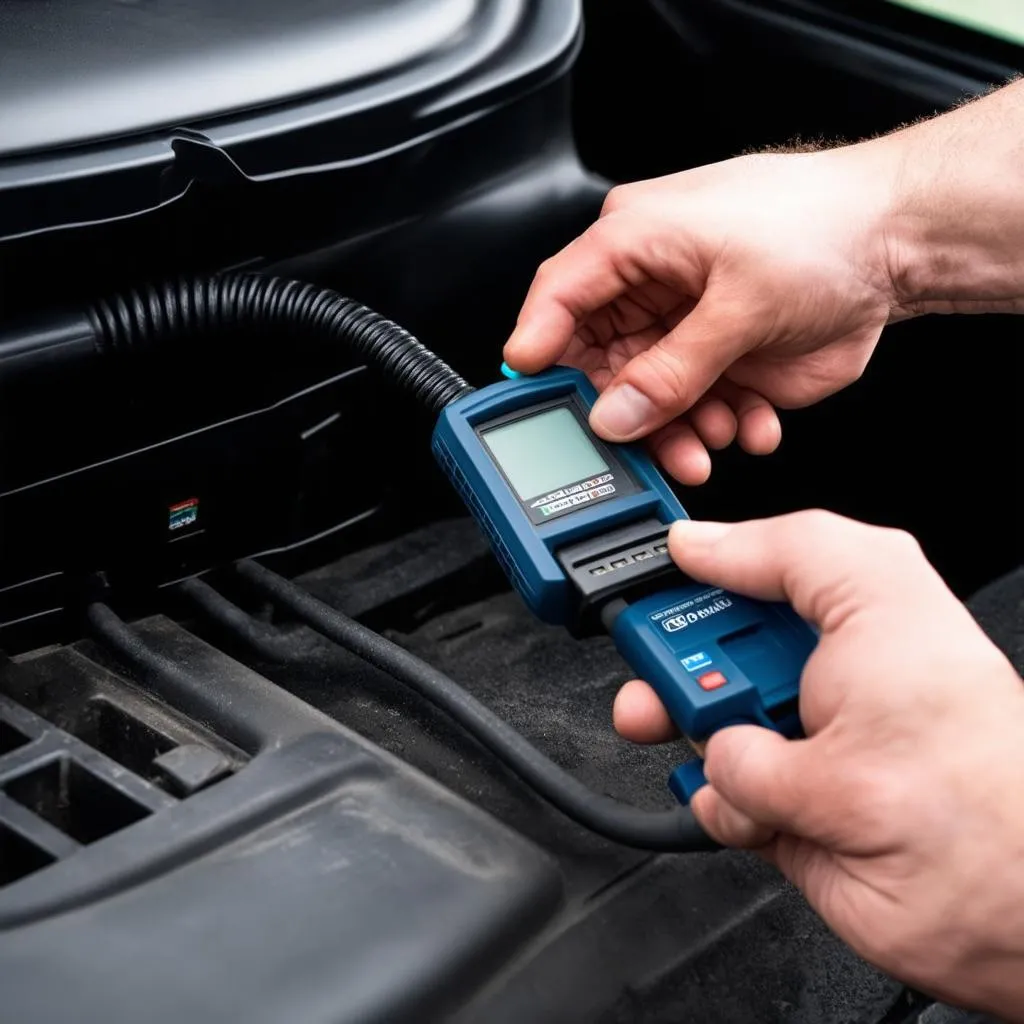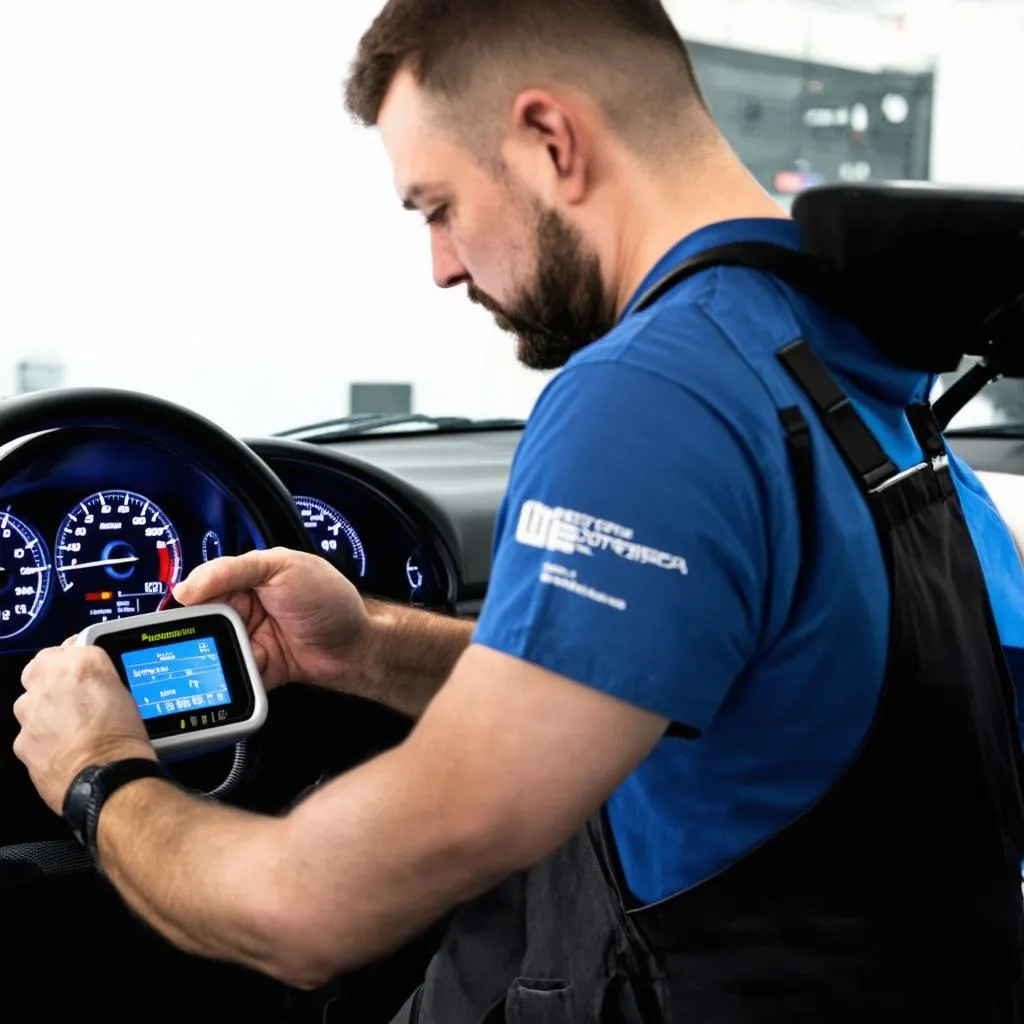“Check engine” light staring at you from the dashboard again? We’ve all been there – that sinking feeling in the pit of your stomach, wondering what fresh hell awaits at the mechanic. Well, fear no more! That little light doesn’t have to be a harbinger of doom. In fact, it’s your car trying to communicate with you, speaking through the language of OBD2 codes.
Think of it like this: your car is a well-oiled machine (pun intended!), and like any complex system, sometimes things go awry. The OBD2 system, short for On-Board Diagnostics, acts as your car’s internal doctor, constantly monitoring various systems and components. When something seems off, it generates a specific code, stored within the car’s computer, to pinpoint the issue.
What Exactly is an OBD2 Code?
Imagine your car whispering, “Hey, something’s not quite right with my fuel mixture,” but instead of words, it uses a five-character code like “P0171.” That’s an OBD2 code in a nutshell – a standardized alphanumeric representation of a specific issue detected by your car’s diagnostic system.
These codes follow a specific format:
- The first character: Indicates the system related to the problem. For instance, “P” stands for powertrain, “B” for body, “C” for chassis, and “U” for network communication.
- The second character: Specifies whether the code is generic (0) or manufacturer-specific (1 or 2).
- The third character: Identifies the specific system affected (e.g., 1 for fuel or air metering, 3 for ignition system, etc.).
- The last two characters: These provide a more detailed description of the specific fault within that system.
For instance, the dreaded “P0420” code, a common sight for many car owners, translates to “Powertrain, Generic, Catalytic Converter System Efficiency Below Threshold (Bank 1).” In simpler terms, your catalytic converter isn’t doing its job effectively.
Why Should You Care About OBD2 Codes?
Knowing the source of the issue empowers you. By understanding these codes, you can:
- Get ahead of potential problems: Detecting issues early can prevent costly repairs down the line. Imagine ignoring a slow tire leak (which might be indicated by a code related to your tire pressure monitoring system) only to face a dangerous blowout on the highway!
- Communicate effectively with your mechanic: Walking into a repair shop armed with the knowledge of potential issues empowers you to have more informed conversations with mechanics and potentially avoid unnecessary services.
- Potentially tackle simple fixes yourself: For the more mechanically inclined, understanding OBD2 codes can open doors to DIY repairs. Feeling empowered to replace a faulty oxygen sensor yourself? That’s money saved and a feather in your DIY cap!
Beyond the Technical: OBD2 Codes and the Bigger Picture
While OBD2 codes are inherently technical, some believe they hold a deeper significance. Just as ancient civilizations looked to the stars for guidance, some modern-day car enthusiasts believe these codes can offer glimpses into the overall “health” and “well-being” of their vehicles. A sudden influx of electrical system codes, for example, might be seen as a sign to pay closer attention to your car’s electrical system maintenance.
Whether you view OBD2 codes as purely technical or as whispers from your car’s soul, understanding them is crucial for any car owner.
 OBD2 Scanner
OBD2 Scanner
Common OBD2 Codes and What They Mean
Let’s delve into some frequently encountered OBD2 codes:
- P0420 (Catalytic Converter System Efficiency Below Threshold): As mentioned earlier, this code often signals a failing catalytic converter, a crucial component for reducing harmful emissions.
- P0171 (System Too Lean (Bank 1) or P0174 (System Too Lean (Bank 2)): These codes indicate that the air-fuel mixture in your engine is off-kilter, with too much air and not enough fuel.
- P0300 (Random/Multiple Cylinder Misfire Detected): This dreaded code suggests that one or more of your engine cylinders aren’t firing properly, which can lead to rough idling, reduced power, and increased emissions.
- P0135 (O2 Sensor Heater Circuit Malfunction (Bank 1, Sensor 1): This code points to a problem with the heater circuit of your oxygen sensor, hindering its ability to monitor emissions effectively.
Remember, these are just a few examples. Hundreds of OBD2 codes exist, each with unique meanings and implications.
Tools of the Trade: Reading OBD2 Codes
Gone are the days when deciphering these codes was the exclusive domain of mechanics with specialized tools. Today, affordable OBD2 scanners are readily available, allowing anyone to access and understand their car’s diagnostic codes. These scanners plug into your car’s OBD2 port (usually located under the dashboard on the driver’s side) and display the codes, often with brief descriptions.
 Mechanic checking codes
Mechanic checking codes
Don’t Panic, Get Informed!
Remember, an illuminated “check engine” light doesn’t necessarily spell disaster. It’s simply a sign that your car is trying to tell you something. By understanding OBD2 codes, you can gain valuable insights into your car’s health, make informed decisions about repairs, and potentially save yourself time, money, and stress.
Looking for More Car Care Wisdom?
Explore these related articles on our website:
- Understanding and Diagnosing P1628 Code in Dodge Ram
- Decoding OBD Codes on a 2000 DeVille
- Troubleshooting OBD-II Code P1217 in a 2007 Charger SXT
- Common OBD Codes for 2003 Nissan Models
Need Expert Help with Your Car’s Diagnostics?
Our team of automotive experts is just a message away! Contact us via WhatsApp at +84767531508 for 24/7 support and guidance on all your car repair needs. We specialize in diagnostic tool setup and can help you get to the bottom of those pesky OBD2 codes.